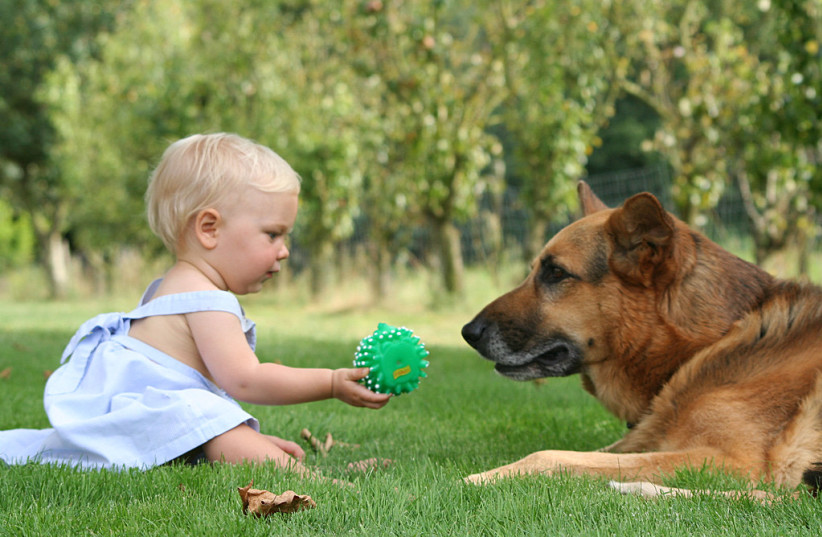Worried about your children inheriting or developing food allergies? Adopt a dog or a cat as a pet.
An analysis of more than 65,000 infants from Japan found that children exposed to pet cats or indoor dogs during fetal development or early infancy tend to have fewer food allergies compared to children who are not exposed.
The findings are in a study just published in the open-access journal PLOS ONE by Hisao Okabe from the Fukushima Regional Center for the Japan Environment and Children’s Study. The study was published under the title “Associations between fetal or infancy pet exposure and food allergies.”
In numerous high-income countries, more than one in 10 children are diagnosed with food allergies, and the incidence of those allergies is continuing to rise. Previous research has suggested a potential link between exposure to dogs or farm animal exposure during pregnancy and early childhood and the reduction of food allergies.
Food allergies lower quality of life for patients and their families, impose significant medical costs and is a major trigger of anaphylaxis, which is sometimes fatal, so preventing its occurrence is a key priority, the team wrote.

“To the best of our knowledge, to date, no study has explored the effect of pet exposure on the risk of developing food allergies in Japanese children, and no exhaustive study has explored the association between various species of pets and food allergies. Moreover, the timing of exposure to pets affecting the risk of food allergies in children has remained unknown,” they continued.
The hygiene hypothesis suggests that pet exposure is effective in preventing allergic disease. Some studies have reported the beneficial effects of dog exposure during fetal development or early infancy on food allergy. However, the effects of exposure to pets other than dogs on various types of food allergies remain unaddressed.
Okabe and his colleagues used data from a nationwide study to research 66,215 children for whom data on exposure to various pets and food allergies were available. About 22% were exposed to indoor pets during fetal development. Among children exposed to indoor dogs and cats, there was a significantly reduced incidence of food allergies, though there was no significant difference for children in households with outdoor dogs.
CHILDREN EXPOSED to dogs kept indoors were significantly less likely to experience egg, milk and nut allergies, while children exposed to cats were significantly less likely to have egg, wheat and soybean allergies. Perhaps surprisingly, children exposed to hamsters had a significantly greater incidence of nut allergies.
The data used were self-reported, supplemented by medical-record data gathered during the first trimester of pregnancy, at delivery and at the one-month check-up. This study could not determine if the link between pet exposure and food allergies was causative, but the authors suggest these results could help guide future research into the mechanisms behind childhood food allergies.
Vegan diets provide adequate nutrition for dogs
Meanwhile, a study at the University of Illinois has shown that at least two human-grade, lightly cooked vegan diets provide adequate nutrition for dogs, and that unlike cats, dogs don’t need to eat meat.
“The trends of vegan foods and human-grade foods are increasing for dogs,” said study co-author Prof. Kelly Swanson, of the university’s Department of Animal Sciences. “Because people are feeding these diets to their pets, it’s important they be tested like all other foods to make sure they’re safe and ‘complete and balanced.’”
Swanson’s team tested two human-grade vegan formulas (with and without a grain ingredient) against a leading brand chicken-based kibble diet. They fed the diets to beagles for three weeks and sampled the dogs’ blood chemistry, fecal quality and microbiome, the collection of microbes present in their feces. Their results are published in the Journal of Animal Science under the title “Apparent total tract macronutrient digestibility of mildly-cooked human-grade vegan dog foods and their effects on the blood metabolites and fecal characteristics, microbiota and metabolites of adult dogs consuming them.”
The team also analyzed the foods – the vegan diets were veterinary nutritionist-formulated mixtures of whole foods like lentils, garbanzo beans, sweet potatoes, butternut squash, apples, blueberries, peas, and carrots – and confirmed both vegan diets and the chicken-based diets met standards set by the Association of American Feed Control Officials for “complete and balanced” nutrition.
“One thing to remember is that animals don’t have ingredient requirements, they have nutrient requirements,” Swanson said. “As long as they’re consuming the essential nutrients in the correct amounts and ratios, dogs can be vegan, vegetarian or meat-eaters. Knowledge of ingredient composition and nutrient needs are critical, however. Anyone can slap together a vegan meal for their dog, but without careful formulation, you might have something that’s really imbalanced.”
The researchers were surprised to find certain blood metabolites – chemicals in the blood that can indicate health status – differed between animals eating the vegan diets and the chicken-based diet. Blood triglycerides and cholesterol, which are measures of circulating fats, were significantly lower in dogs fed the vegan diets. This information could benefit obese pets and help maintain a healthy weight, Swanson added.
“There were some interesting and beneficial changes in the microbial community that I think reflect the blend of fibers that were present in the vegan diets. The fecal metabolites phenol and indole, both of which contribute to fecal odor, were dramatically decreased in those diets too. It’s still going to smell, but probably less,” Swanson said. “Overall, it looked like there were some beneficial shifts from a gut-health perspective in dogs fed the vegan diets.”
